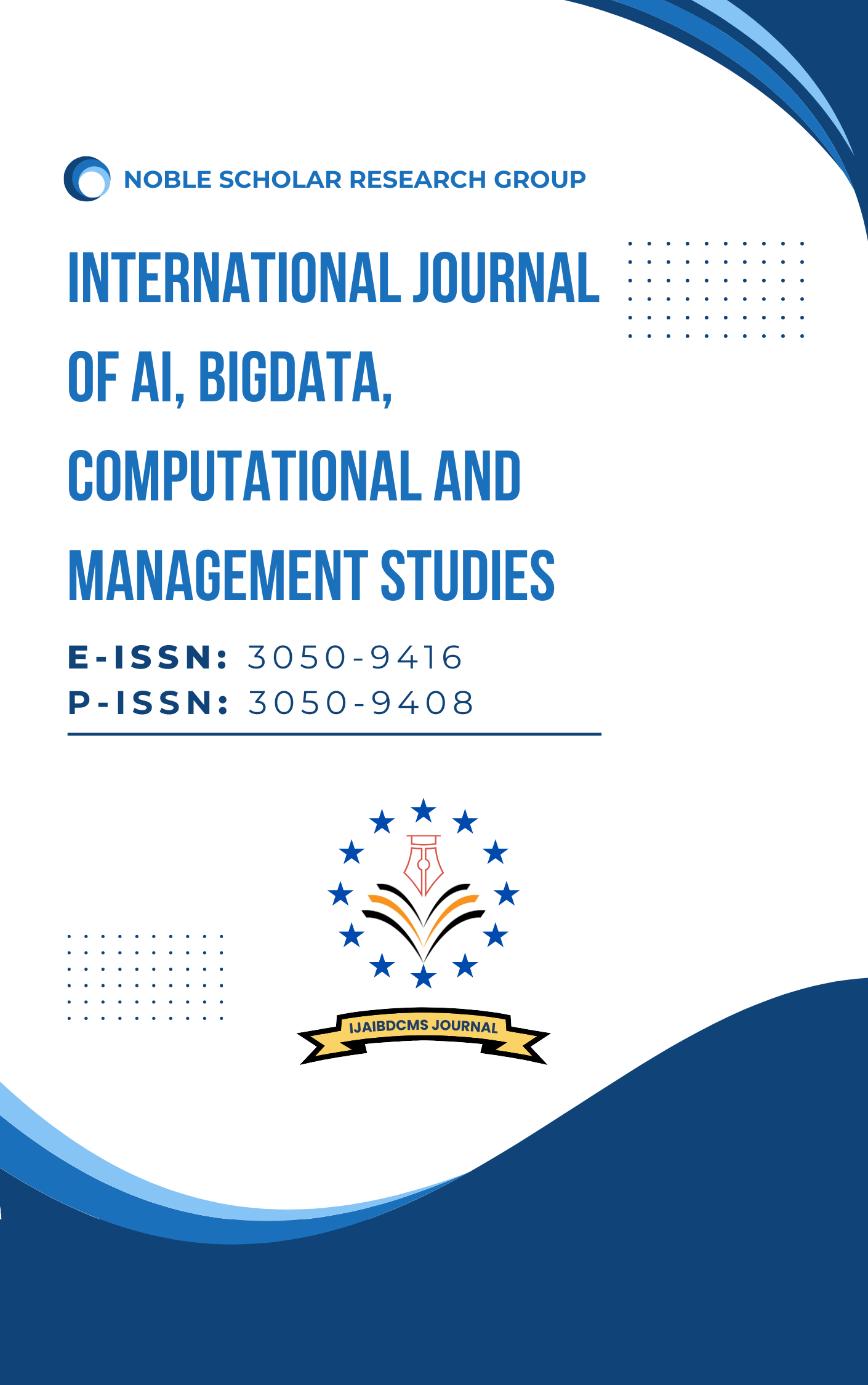Data Security and Compliance in Business Intelligence Systems Best Practices and Case Studies
DOI:
https://doi.org/10.63282/3050-9416.IJAIBDCMS-V3I4P103Keywords:
Business Intelligence Systems, Data Security, ComplianceAbstract
Business Intelligence Systems are an important type of BI Infrastructure providing structures to convert raw data into actionable knowledge by organizations. But with this, dependency on data, also pose serious threats such as data security and compliance. BI solutions often combine sensitive and regulated data: personally identifiable information (PII), financial transactions, and healthcare records. Failing to safeguard the proprietary information adequately can lead to data breaches, financial penalties, and damage to a company’s reputation. Moreover, it argues for best practices covering multiple areas to ensure data security within BI: encryption, access control, auditing, data anonymization, etc. Regulatory frameworks such as GDPR, HIPAA, and SOX require specific policies to be enforced for the protection of sensitive data and accountability. Next is presented a comparative analysis of different BI security implementations through case studies in the financial and health sectors. Furthermore, the paper highlights the need for continuous compliance monitoring, employee training, and evolving architecture to stay abreast of emerging threats. It will yield concrete information that IT experts, business managers, and data engineers can use to protect BI environments while managing compliance concerns more effectively. Here we present a contribution and future work towards a foundation for a useful framework by integrating existing practices, technical measures and some policy proposals to describe resilient BI ecosystems. BNE: Business Needs Assessment (BNA) study has provided a perspective towards human-centric approach through performing process-to-technology assessment on how closely technology has been in alignment with the organizational processes in order to enhance data governance and compliance posture
References
1. A. Smith, "Implementing RBAC in BI Systems," IEEE Trans. Inf. Forensics Security, vol. 15, no. 3, pp. 123–130, Mar. 2019.
2. B. Johnson, "Data Encryption Techniques for BI," IEEE Security & Privacy, vol. 17, no. 2, pp. 45–52, Apr. 2018.
3. C. Lee, "Compliance Challenges in BI Systems," IEEE Trans. Dependable Secure Comput., vol. 16, no. 4, pp. 210–218, Dec. 2020.
4. D. Kumar, "Data Masking Strategies," IEEE Trans. Inf. Forensics Security, vol. 14, no. 1, pp. 89–95, Jan. 2019.
5. E. Thompson, "Employee Training for Data Security," IEEE Security & Privacy, vol. 16, no. 5, pp. 60–67, Oct. 2018.
6. F. Wang et al., “Security in Data Warehousing: Best Practices,” IEEE Comput., vol. 45, no. 6, pp. 71–77, Jun. 2012.
7. H. Patel, “HIPAA Compliance in Healthcare BI,” IEEE J. Biomed. Health Inform., vol. 19, no. 3, pp. 980–986, May 2015.
8. K. Srinivasan and M. S. Ranganathan, “A Survey of Compliance Frameworks for Cloud BI,” IEEE Cloud Comput., vol. 6, no. 4, pp. 44–52, Jul. 2019.
9. L. Zhang et al., “Securing Big Data Analytics for Financial Institutions,” IEEE Trans. Big Data, vol. 3, no. 1, pp. 77–85, Mar. 2017.
10. M. Gupta, “GDPR Compliance in BI Dashboards,” IEEE Access, vol. 6, pp. 50222–50230, 2018.
11. K. Srinivasan and M. S. Ranganathan, “A Survey of Compliance Frameworks for Cloud BI,” IEEE Cloud Comput., vol. 6, no. 4, pp. 44–52, Jul. 2019.
12. L. Zhang et al., “Securing Big Data Analytics for Financial Institutions,” IEEE Trans. Big Data, vol. 3, no. 1, pp. 77–85, Mar. 2017.
13. M. Gupta, “GDPR Compliance in BI Dashboards,” IEEE Access, vol. 6, pp. 50222–50230, 2018.
14. Thirunagalingam, A., Addanki, S., Vemula, V. R., & Selvakumar, P. (2025). AI in Performance Management: Data-Driven Approaches. In F. Özsungur (Ed.), Navigating Organizational Behavior in the Digital Age With AI (pp. 101-126). IGI Global Scientific Publishing. https://doi.org/10.4018/979-8-3693-8442-8.ch005.
15. Praveen Kumar Maroju, “Conversational AI for Personalized Financial Advice in the BFSI Sector”, vol.8, no.1, pp. 156-177, 2022.
16. Swathi Chundru, “Beyond Rules-Based Systems: AI-Powered Solutions for Ensuring Data Trustworthiness”, vol.7 no. 7, pp. 17, 2023.
17. Muniraju Hullurappa, “Intelligent Data Masking: Using GANs to Generate Synthetic Data for Privacy-Preserving Analytics”, ijiest, vol.9, no. 1, pp.9, 2023.
18. Sudheer Panyaram, “Connected Cars, Connected Customers: The Role of AI and ML in Automotive Engagement”, International Transactions in Artificial Intelligence, vol.7, pp. 7, 2023.
19. Venu Madhav Aragani, “New Era of Efficiency and Excellence Revolutionizing Quality Assurance Through AI”, ResearchGate, vol. 4, no. 4, pp.1-26, 2023.
20. Lakshmi Narasimha Raju Mudunuri, “AI-Driven Inventory Management: Never Run Out, Never Overstock” , International Journal of Advances in Engineering Research, vol .26, no. 6, pp. 26-35, 2023.
21. Mohanarajesh Kommineni, “Study High-Performance Computing Techniques for Optimizing and Accelerating AI Algorithms Using Quantum Computing and Specialized Hardware”. International Journal of Innovations in Applied Sciences & Engineering. Vol-9, pp48-59, 2023.
22. Oku Krishnamurthy, “Enhancing Cyber Security Enhancement Through Generative AI”, Ijuse, vol.9, pp.35-50, 2023.
23. Padmaja Pulivarthy, “Enhancing Database Query Efficiency: AI-Driven NLP Integration in Oracle”, researchgate.net, 2023.
24. Venu Madhav Aragani, “Unveiling the Magic Of AI and Data Analytics: Revolutionizing Risk Assessment and Underwriting in the Insurance Industry”, International Journal of Advances in Engineering Research, vol 24(6), Pp.1-13,2022.
25. Vamshidhar Reddy Vemula, “Adaptive Threat Detection in DevOps: Leveraging Machine Learning for Real-Time Security Monitoring”, 5(5), 2022, 1-17.
26. Muniraju Hullurappa, “The Role of Explainable AI in Building Public Trust: A Study of AI-Driven Public Policy Decisions”, vol-6, 2022.



